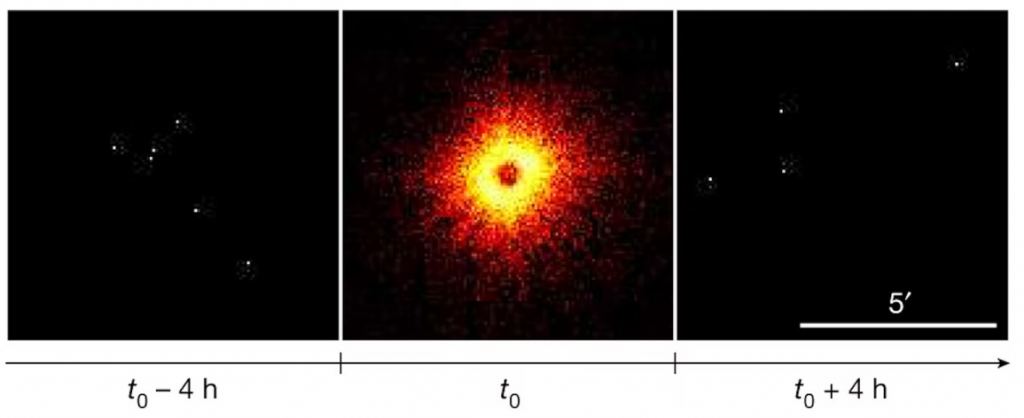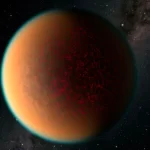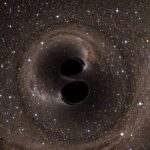Key Takeaways:
- In July 2020, astronomers using the eROSITA X-ray instrument captured the first-ever real-time observation of a nova explosion on a white dwarf star, producing a fireball of X-rays.
- White dwarfs are small, dense stars that form when low-mass stars use up their fuel, and can occasionally undergo super-hot explosions known as novae.
- Novae are different from supernovae, as they do not eject as much material from the star and can occur multiple times in the life of a white dwarf.
- Observing novae during the initial X-ray emission phase is challenging due to its short duration and the absorption of soft X-rays by interstellar medium.
- The eROSITA instrument, part of the SRG mission, successfully detected the nova event on YZ Reticuli, also known as Nova Reticuli 2020, providing valuable insights into the phenomenon.
On July 7, 2020, astronomers achieved a groundbreaking milestone by capturing, in real time, an event that had only been theoretical until then. Utilizing the eROSITA X-ray instrument, scientists observed the explosion of a nova on a white dwarf star, resulting in a burst of X-rays often referred to as a “fireball.”
Led by Ole König from Friedrich-Alexander-Universität Erlangen-Nürnberg (FAU), the research team described the event as a fortunate coincidence. These X-ray bursts are extremely brief and nearly impossible to predict, necessitating precise alignment of the observational instrument with the explosion.
A white dwarf, a highly compact star formed from the remnants of a low-mass star, typically possesses a size similar to that of a planet. Occasionally, these dormant stars reignite in a spectacular explosion, generating a surge of X-ray radiation before returning to their original luminosity. Unlike supernovae, which expel a significant portion of the star’s material, novae release much less mass and can recur throughout a white dwarf’s lifespan.
While novae are relatively common occurrences, detecting them during the initial X-ray emission phase poses a considerable challenge. Dr. Victor Doroshenko from Tübingen University explained that the brevity of the flash and the soft nature of emitted X-rays, which are easily absorbed by interstellar matter, hinder observations in this spectrum.
The eROSITA instrument, part of the Russian-German Spectrum-Roentgen-Gamma (SRG) mission, has been surveying the medium energy X-ray range since 2019. This survey, akin to the James Webb Space Telescope, is vital in broadening our understanding of celestial phenomena.
For three decades, scientists postulated the existence of a ‘fireball’ phase following a runaway fusion nova event. The key, as König emphasized, lies in precisely aligning the telescope with the event’s location at the right moment.
The team’s paper, published in Nature, revealed that no X-ray source was detected within a four-hour window on either side of the visible flash, indicating a flash duration of less than eight hours.

The nova event unfolded on YZ Reticuli, also known as Nova Reticuli 2020, a naked eye nova discovered in the Reticulum constellation on July 15, 2020. Previously classified as a VY Sculptoris type object under the designation MGAB-V207, Nova Reticuli 2020 was first spotted by experienced comet hunter Robert McNaught from Coonabarabran, Australia. It was visible in the southern hemisphere for several days, faintly perceptible to the naked eye.
Dr. Valery Suleimanov, also from Tübingen University, explained that the X-ray emissions from white dwarf atmospheres are well-understood, allowing for detailed modeling. Comparing these models with observations offers insights into fundamental properties such as weight, size, and chemical composition.
However, Doroshenko pointed out a unique challenge in this case. After three decades with no photon emissions, an unexpected influx of photons disrupted eROSITA’s spectral response, designed to detect numerous faint objects rather than a single, intensely bright event.
Due to the rapid depletion of fuel, novae cool swiftly, causing the X-ray radiation to weaken until it transforms into visible light. Predicting such outbreaks is exceptionally challenging, relying largely on fortuitous alignment with X-ray detectors. The visible light reached Earth 12 hours after the eROSITA detection, when it was first observed by McNaught.
König emphasized, “What appeared to be a remarkably bright star was, in fact, the visible light emanating from the explosion, so luminous that it could be seen with the naked eye in the night sky. We were incredibly fortunate.”


